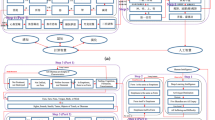Abstract
Virtual Learning Environments allow to improve the learning interactivity in a collaborative scenario where the learning contents are proposed and accessed by both learners and teachers. In this work, we present CSLQT, a new Collaborative System for Learning based on Questionnaires and Tasks. This system is independent of any course structure or content, and provide users with functionalities to create, review, and evaluate new knowledge resources through questions and tasks. The benefits are two-fold: teachers are released from the tedious task of creating all resources, and students are encouraged to gain the necessary knowledge background before creating any new content. Additionally, a Fuzzy controller generates exams satisfying a customized set of objectives, that could be used for evaluation or auto-evaluation purposes. Our experiences with the system in real courses of the University of Granada indicate the tool is actually useful to improve the learning process.
Access this chapter
Tax calculation will be finalised at checkout
Purchases are for personal use only
Preview
Unable to display preview. Download preview PDF.
Similar content being viewed by others
References
Fernández-Manjón, B., Bravo-Rodríguez, J., Gómez-Pulido, J.A., Vega-Rodríguez, J.M.S.P.M.A.: Computers and Education: E-learning, from Theory to Practice. Springer (2007)
Alario-Hoyos, C., Bote-Lorenzo, M.L., Gómez-Sánchez, E., Asensio-Pérez, J.I., Vega-Gorgojo, G., Ruiz-Calleja, A.: Glue!: An architecture for the integration of external tools in virtual learning environments. Computers and Education 60(1), 122–137 (2013)
Dillenbourg, P., Schneider, D., Synteta, P.: Virtual learning environments. In: Proceedings of the 3rd Hellenic Conference ”Information & Communication Technologies in Education”, pp. 3–18. Kastaniotis Editions, Greece (2002)
Weller, M., Dalziel, J.: Bridging the gap between web 2.0 and higher education. Pratical Benefits of Learning Design, 76–82 (2007)
Tsolis, D., Stamou, S., Christia, P., Kampana, S., Rapakoulia, T., Skouta, M., Tsakalidis, A.: An adaptive and personalized open source e-learning platform. Procedia-Social and Behavioral Sciences 9, 38–43 (2010)
Sánchez, R.A., Hueros, A.D., Ordaz, M.G.: E-learning and the university of huelva: A study of webct and the technological acceptance model. Campus-Wide Information Systems 30(2), 5 (2013)
Davis, F.D.: Perceived usefulness, perceived ease of use, and user acceptance of information technology. MIS Quarterly, 319–340 (1989)
Chow, M., Herold, D.K., Choo, T.M., Chan, K.: Extending the technology acceptance model to explore the intention to use second life for enhancing healthcare education. Computers & Education (2012)
Escobar-Rodriguez, T., Monge-Lozano, P.: The acceptance of moodle technology by business administration students. Computers & Education 58(4), 1085–1093 (2012)
Lonn, S., Teasley, S.D.: Saving time or innovating practice: Investigating perceptions and uses of learning management systems. Computers & Education 53(3), 686–694 (2009)
Doukas, N., Andreatos, A.: Advancing electronic assessment. International Journal of Computers, Communications & Control 2(1), 56–65 (2007)
Perry, S., Bulatov, I., Roberts, E.: The use of e-assessment in chemical engineering education. Chemical Engineering 12 (2007)
Dib, H., Adamo-Villani, N.: An E-tool for assessing undergraduate students’ learning of surveying concepts and practices. In: Liñán Reyes, M., Flores Arias, J.M., González de la Rosa, J.J., Langer, J., Bellido Outeiriño, F.J., Moreno-Munñoz, A. (eds.) IT Revolutions. LNICST, vol. 82, pp. 189–201. Springer, Heidelberg (2012)
Verdegay-López, J., Castro, J.: Gsadq: Incorporando información difusa o con incertidumbre al diseño automático de cuestionarios. In: Conferencia de la Asociación Española para la Inteligencia Artificial (2002)
Romero, M., Moreo, A., Castro, J.: A cloud of faq: A highly-precise faq retrieval system for the web 2.0. Knowledge-Based Systems x(x) x–x (2013) (available online May 2, 2013)
Author information
Authors and Affiliations
Corresponding author
Editor information
Editors and Affiliations
Rights and permissions
Copyright information
© 2014 Springer International Publishing Switzerland
About this paper
Cite this paper
Cantal, M.R., Fernández, A.M., Peña, J.L.C. (2014). Collaborative System for Learning Based on Questionnaires and Tasks. In: Herrero, Á., et al. International Joint Conference SOCO’13-CISIS’13-ICEUTE’13. Advances in Intelligent Systems and Computing, vol 239. Springer, Cham. https://doi.org/10.1007/978-3-319-01854-6_64
Download citation
DOI: https://doi.org/10.1007/978-3-319-01854-6_64
Publisher Name: Springer, Cham
Print ISBN: 978-3-319-01853-9
Online ISBN: 978-3-319-01854-6
eBook Packages: EngineeringEngineering (R0)




